Last Updated on May 5, 2017
Season 2 of Home Fires, the British drama series about life on the Home Front during the Second World War, is about to air again on PBS starting Sunday April 2nd.
Home Fires tells the story of a rural English town on the verge of World War II. As two powerful women struggle to put aside their differences in The Women’s Institute, a community learns to unite amidst the chaos and uncertainty of wartime. Samantha Bond (Downton Abbey) and Francesca Annis (Reckless, Cranford) star in this heartwarming story of courage, friendship, and holding onto light in our darkest moments.
The Final Season of Home Fires follows the village when conflict takes hold. As the separation from their husbands, fathers, sons and brothers becomes more painful, the women rely on one another and the friendships forged through village life. It will take calm, fortitude, and creativity to bring the diverse women of the village together, and to help the community survive what is to come.
As the drama moves forward in time, it might be useful to have a refresher about our characters and a little background to the historical period against which it is set.
Jambusters / Home Fires author Julie Summers brings us the details we need to get ready to watch Season 2. There’s also news about what’s next for the story.
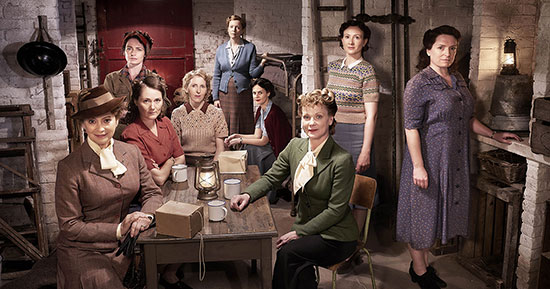
Then each week, Julie Summers will introduce us to the coming episode. No spoilers, she promises, just some background detail to add to the enjoyment of the series.
You can check back on Willow and Thatch for each installment, or sign up for the newsletter now.
Season 1 is available to stream for free with Amazon Prime. If you don’t already have Prime, you can get a free trial here.
When you are finished reading this, you may want to see the interview with Julie about Home Fires, and learn how her book was adapted into the period drama.

The historical setting
The summer of 1940 was the most dramatic of the Second World War for the British population. It was the moment when the country believed it would be invaded by the Germans. It was a full eighteen months before the USA would enter the war and the feeling of vulnerability was profound. Families flocked to send their children to safety in the USA and Canada, believing they would be safer there, despite the risk of U-Boat attack in the Atlantic. The country was on edge. Everyone held their collective breath.
It is key to understanding series 2 of Home Fires that although we know the outcome of the war, the villagers in Great Paxford do not. They believe, as even Churchill did, that invasion was imminent. When we left Great Paxford at the end of series 1 the villagers all stood on the street, spell-bound by the sight of hundreds of aircraft flying south. The so-called Phoney War had come to an end and the real war was about to begin.
In fact, by the time those planes were flying south, Hitler’s troops had already invaded Denmark and Norway. The British Expeditionary Force had been guarding the Maginot Line for the last nine months but was woefully unprepared for what was to come. On 10th May 1940 two things happened that changed the course of the Second World War: Hitler launched the Blitzkrieg against France, Belgium and neutral Holland, and in Britain Winston Churchill became Prime Minister. For two weeks the BEF and its Allies fought to hold out against the German onslaught but towards the end of May it was obvious that they had suffered a humiliating defeat and Churchill ordered a retreat. The familiar story of Dunkirk now unfolded. Hundreds of boats, ships, barges and tugs were sent to the rescue and over 330,000 British and Allied soldiers were picked up from the beaches of Dunkirk over a period of several days.
My grandfather was pulled out of the water by a Thames barge on 2nd June and brought back to Southampton by ship. ‘The sailors who dried our clothes pinched all our buttons and insignia but we were so relieved to be safe we didn’t bother about it.’ The following night he was reunited with his wife, Alex: ‘It was one of the strangest contrasts of the war. One night I was standing up to my neck in water with very little chance of rescue and the next I was eating dinner with my wife in the Midland Hotel in Manchester.’
Three weeks later France fell and Britain stood alone. A brilliant piece in the New York Times from July 1940 summed up the situation in Britain seen from the other side of the great Atlantic Ocean:
The folk, old towns of Britain, the hills and cliffs and shores and meadows, rich with history, the homes and lives of forty-five million people, the great British traditions of human worth and dignity, the folk sayings, the deep wisdom and the long-suffering hopes of a race – these, not being pleasing to Hitler, are condemned…
From our own shores we cannot see the shadow over ancient gardens, over houses hoary with age, over the graves of poets and philosophers, and the tombs of the martyrs. We know only that one of the green and lovely oases of civilisation in the wilderness of man’s time on earth, is foully threatened and that the whole world for evermore will be the poorer if it falls.
 Our characters
Our characters
Rural Britain in 1939 was predominantly white. That cannot be denied. But it was far from middle-class. Mass Observation, that brilliant window on everyday life, presented the most valuable of vignettes in its myriad reports, diaries, questionnaires and observations during the early years of the war. Set up in 1937 by three young men, anthropologist Tom Harrisson, poet and journalist Charles Madge, and filmmaker Humphrey Jennings, its aim was to document and record everyday life in Britain through the eyes of ordinary people. They listed four classes in Britain in the late nineteen thirties: upper class, middle class, artisan class and unskilled working class. They estimated that the working class accounted for sixty-five per cent of the population as opposed to roughly fourteen per cent in 2015. The upper class, or aristocracy, represented five per cent and the remainder (thirty per cent) was split between the burgeoning middle class of the nineteen thirties and the artisan class, which included skilled workers on low incomes. This is reflected in all the research I have done for my books on the social history of the Second World War and was picked up by the writer Simon Block for Home Fires.
A typical village in the early twentieth century would have a manor house, inhabited by the squire and his family, who might be resident full-time or who might only come down for the hunting. Then there would be the farmers, some owning their own farms, others as tenant farmers but many of very long-standing. These families, headed by the men, might have been working the land for many decades, if not centuries. Resistance to change, and in particular to book learning, was strong among this group. The main body of the village would comprise farm labourers and their families, who again might have been living in the village and serving the big house for generations. Some villages had a doctor and he, as a man of learning with knowledge of science, was held in high regard. The vicar or priest was accorded equal respect. A few villages could boast an artist or two but they were generally on the periphery of village life and not part of the hierarchy.
Home Fires echoes this picture of English rural life at the outbreak of the Second World War. Joyce Cameron is the wife of the wealthiest man in the village, even though we barely get to see Douglas Cameron in the series. I have always imagined him as owning farms and land in the in the area around Great Paxford. Joyce could best be described as old school middle-class in that she was born into the privilege rather than earning her way into it as the other middle class character, Frances Barden, would have to have done. Frances and Peter, a wealthy factory owner, are both university educated and belong to the new middle class that, frankly, appalled Douglas and Joyce Cameron. Their household, with Cookie and Thumbs – the cook and gardener – and Claire Hillman, the housemaid, represents a fairly typical well-to-do family of the era. Had the Bardens had children, there would have been a nanny and quite possibly a nursery nurse. That is the sum total of the middle-class characters in Home Fires and they dominate the drama in the early episodes, in keeping with the mores of the time.
For the women in Great Paxford the arrival of the Women’s Institute, probably in the early nineteen twenties, did more for their social mobility and education than anything else. It gave them a reason to meet up and discuss any number of topics regardless of their social background. When the WI was set up in Wales 1915 it was modelled on the Canadian model of a safe meeting place for women to expand their horizons, share experiences, learn and try new things and, above all, it was meant for every woman, whatever her personal circumstance. From the word go there was to be no bar for anyone joining the WI. Church and Chapel, Conservative and Labour, upper and working class, gay and straight – everyone was welcome. This did not always succeed, especially if a village were hide-bound by ancient traditions and divisions. But the first two episodes of Home Fires shows how that could be and was broken with a change of leadership. Under the guidance of Frances Barden the Great Paxford Women’s Institute opens its doors to a wider spread of women from the village and welcomes incomers.
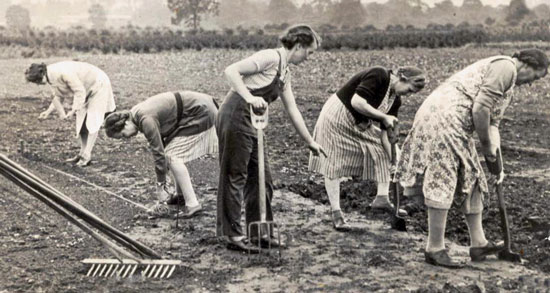
Their first recruit from the village is Steph Farrow, a tenant farmer who runs her herd of a dozen cows with her son Little Stan. It is possible that her farm is owned by Douglas Cameron, although that has never been mentioned. Certainly it does not belong to the Farrows. Her husband, Stan, goes off to war leaving Steph in charge and she soon gets into difficulty with the Ministry of Agriculture when she finds it impossible to keep up with her paperwork. We realise that she can neither read nor write. Illiteracy among women born before the First World War was high and it was something that the Women’s Institute was keen to address. Education was, and remains, the keystone of the movement and it gives the WI its present charitable status. Thus it is entirely in character that Steph is taught to read and write by a fellow WI member, Teresa Fenchurch, the teacher from Liverpool.
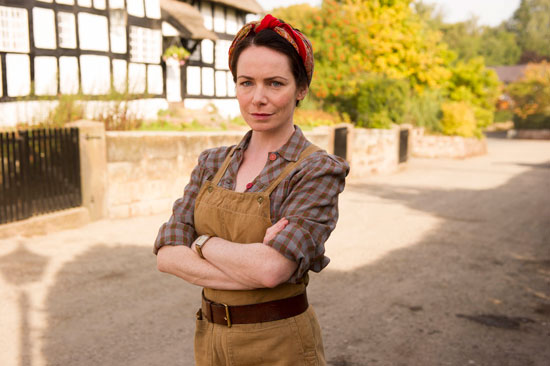
Teresa is a breath of fresh air in Great Paxford. Coming straight from a poor area of the city she has experience of all types of families and children. She is no doubt the first in her family to be educated to teacher level and the passion with which she encourages the children to learn to read and write is something new in the village. She understands how education can change lives and open doors for children who, in the past, would have had to follow their parents into farming or service. Her past liaison with Connie, a fellow teacher from Liverpool, is the key reason she had to leave the city and she hopes to put it behind her. She is typical of the kind of woman who came from the city to the countryside during the war, though many of the teachers who ended up in village schools were there because of the evacuation of school children rather than by choice. This chimed with many viewers who remember their parents talking about the quality of teachers coming from the cities into the countryside during the war and raising the standard and ambition of local teaching.
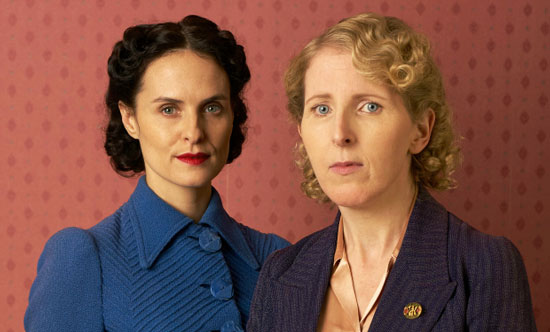
Teresa’s landlady, Alison Scotlock, has her own secret that she is keen to hide. Although ostensibly a respectable working woman trained as a book-keeper, she is not legitimately Mrs Scotlock. She and George were not married as he was unable to obtain a divorce from his first wife. Had this become widely know in Great Paxford she might have found it difficult to stay. She therefore lives dangerously close to the edge of society and her entanglement with the world of crime is born out of necessity. Her friendship with Teresa is understandable: They each learn the other’s secret and agree, in an unspoken understanding, to keep it.
Dr Will Campbell, as a professional, is held in high regard as is Adam Collingbourne, the vicar and their wives enjoy status because of their husbands’ professional roles. Erica and Sarah soon evolve as powerful characters in their own right and we see the world through their eyes rather than that of their husbands. The novelist Penelope Fitzgerald, the daughter of a vicar, wrote that the dilemma for vicars was they had to live a middle-class lifestyle on a working-class salary. That is hinted at in Home Fires because Sarah has no help in the vicarage and is happy to take in a lodger at the outbreak of war. Erica Campbell helps to bolster the family’s income working as the practice pharmacist, something that is especially helpful during series two when the family fortunes are affected by Laura’s affair with her boss.
Bryn the Butcher is from North Wales, probably the son of a butcher or a farmer, and his wife, Miriam, hails from the same sort of background. The butcher’s place in the village, like that of the greengrocer, garage owner and postman, was such that they would have addressed most of their customers as Mr or Mrs so-and-so. They belong to the artisan class as defined by Mass Observation. Bryn probably encouraged Miriam to join the WI in order to make friends with other women in the village and to help to break through the class barriers.
Bob Simms and his long-suffering wife, Pat, represent the dark side of village life in the nineteen thirties. Bob is a frustrated writer. His first novel was a runaway success but he has failed to match that with any subsequent writing. Pat lives to service Bob’s writing life. The domestic abuse she suffers at Bob’s hands is not unusual for that era – nor sadly for today – and the secrecy that surrounds it plays to the conspiracy of silence that is prevalent in abusive households. Whether she and Bob were ever able to consider themselves middle-class is a moot point. From the perspective of where we first meet them in Home Fires they have definitely slipped down the ladder to surviving on a working class income with Bob getting jobs where he can. He is too proud to admit that Pat could help out by working but eventually she prevails and we celebrate her tiny bit of freedom from the tyranny of their domestic life.
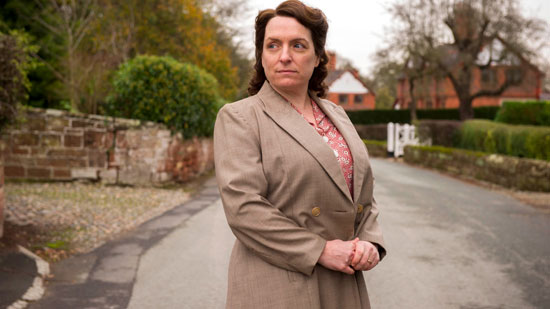
Other characters who are introduced into the drama in uniform join that mysterious ‘class’ that was, by its nature, classless. Some 15 million men and women were entitled to wear uniform over the course of the Second World War. Some were in the armed services but others were in organisations such as Air Raid Precautions, Home Guard, Women’s Voluntary Service or the Women’s Land Army. Women were called in to take over roles that were traditionally the preserve of men. They worked as tram and bus conductors, they stripped engines of all sizes, from locomotives to lorries; they worked in factories making uniform, parachutes, helmets or munitions, camouflage nets and vehicles. All these people belonged to a special caste that changed with their clothes. Zelma Katin was a tram conductor in Sheffield during the day and a housewife by night.
She wrote: ‘The Englishman’s inhibitions vanish before the sight of a uniform and he speaks far more readily to conductresses than to fellow-passengers. I suppose he feels that as we are public servants he has a stake in our personal lives.’ Jenny Hillman, the village gossip, takes on a whole new persona when she joins the WAAF in series two while our admiration for Wing Commander Nick Lucas cutting a dashing figure in his blue uniform is such that we never even question what his background might be.
The young people in the drama – Will and Erica’s girls Kate and Laura; David Brindsley, the butcher’s son; Claire Hillman and Spencer Wilson, housemaid to the Bardens and postman respectively are all less inhibited by their backgrounds and point forward to the social mobility and class upheaval that grew out of the Second World War.
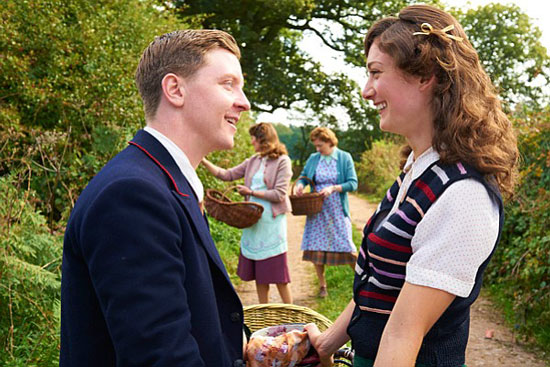
And then we have the foreigners who appear in the second series. There is Mrs Esposito, an Italian who has lived in the village for twenty years. She is rounded up and arrested as an enemy alien along with 19,000 of her fellow countrymen on Churchill’s orders but not before we witness the shocking verbal abuse of her by the local children. They run behind her shouting ‘Wop Wop’. Meanwhile, 4,000 Czechoslovak soldiers arrive in Cholmondeley Castle in June 1940 and as Great Paxford is just down the road from there we get to see them in the second series. The Czechs fought with great distinction alongside the Allies in the Battle of Britain, D-Day, Arnhem and many other battles besides. They, along with the Poles, who were at this stage not in Cheshire (though they turned up later in the war) were among the huge number of servicemen from all over who fought alongside the Allies.
Had we been allowed to continue with Home Fires the face of Great Paxford would have changed, as did the face of rural Britain, as wave upon wave of incomers changed life in the countryside forever. This culminated in 3 million American GIs which included 130,000 black soldiers, a battalion of whom were housed in Tattenhall, just a few miles down the road from Great Paxford. Sadly that honour has been denied us and I deeply regret that we were never able to tell the whole story.
I think one of the reasons why Home Fires resonates so strongly with its audience is precisely because it is not a one-dimensional middle-class drama. The history is so interwoven with the stories that it represents a snap shot of real-life seventy-five years ago. The men and women whose lives we see created on-screen in the brilliant scripts by Simon Block are in our DNA. Their lives and experiences have echoes in our own past. Their joy and pain, their losses and gains, are universal and familiar. They are in our parents, grandparents, great aunts and uncles. The world is one we can recognize and I am only sorry that the powers that be could not see how relevant and important that was, and remains, to many people who love the series. – Julie Summers

Some news about the continuation of the story
This will mean more to you after you’ve watched the last episode of Season 2, but as you know (or have just gleaned form the above), Home Fires was not renewed for a third season. Despite great disappointment from fans, and being named as the cancelled British TV show that most deserves to be brought back in a recent Radio Times poll, there is still no news on the possibility of it being picked up by another network.
Over 16,000 people voted in a RadioTimes.com poll asking which axed show should get a revival; in the end, ITV period drama Home Fires won through, pulling in over a third of the total votes. – Radio Times
There is however, some other news. The television series’ creator has planned to write three new novels to continue telling the story. He said “The aim is that those familiar with the TV show will be able to seamlessly continue with the books; while those new to the world of Home Fires will swiftly find themselves brought up to speed and immersed in the stories of the women of Great Paxford.” No spoilers here, but this will be welcome news to those who find themselves unsettled by the series’ ending, which is quite the cliffhanger. It’s not the renewal Home Fires’ fans are hoping for, but it should provide some closure in case we never get to see future seasons of the wonderful series that all started with Julie Summers’ book.
Home Fires is written by Simon Block and inspired by Julie Summers’ book of the same name. Her book is non-fiction so you won’t find the stories of Frances Barden, Joyce Cameron or Alison Scotlock in the book but you will be able to see the true story of the women who inspired Simon Block’s compelling characters.
Watch the much-anticipated final season of this beloved series on Sundays, April 2nd – May 7th, 2017 at 9/8c on MASTERPIECE.
Read about the history behind Season 2, Episode 1, here.
Read about the history behind Season 2, Episode 2, here.

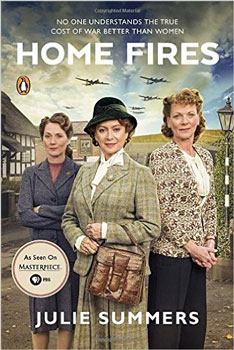 About the book Home Fires: Away from the frontlines of World War II, in towns and villages across Great Britain, ordinary women were playing a vital role in their country’s war effort. As members of the Women’s Institute, an organization with a presence in a third of Britain’s villages, they ran canteens and knitted garments for troops, collected tons of rosehips and other herbs to replace medicines that couldn’t be imported, and advised the government on issues ranging from evacuee housing to children’s health to postwar reconstruction. But they are best known for making jam: from produce they grew on every available scrap of land, they produced twelve million pounds of jam and preserves to feed a hungry nation.
About the book Home Fires: Away from the frontlines of World War II, in towns and villages across Great Britain, ordinary women were playing a vital role in their country’s war effort. As members of the Women’s Institute, an organization with a presence in a third of Britain’s villages, they ran canteens and knitted garments for troops, collected tons of rosehips and other herbs to replace medicines that couldn’t be imported, and advised the government on issues ranging from evacuee housing to children’s health to postwar reconstruction. But they are best known for making jam: from produce they grew on every available scrap of land, they produced twelve million pounds of jam and preserves to feed a hungry nation.
Home Fires, Julie Summers’s fascinating social history of the Women’s Institute during the war (when its members included the future Queen Elizabeth II along with her mother and grandmother), provides the remarkable and inspiring true story behind the upcoming PBS Masterpiece series that will be sure to delight fans of Call the Midwife and Foyle’s War. Through archival material and interviews with current and former Women’s Institute members, Home Fires gives us an intimate look at life on the home front during World War II.
Julie Summers has written six books about the Second World War era including Stranger in the House: Women’s Stories of Men Returning from the Second World War, and When the Children Came Home: Stories of Wartime Evacuees.
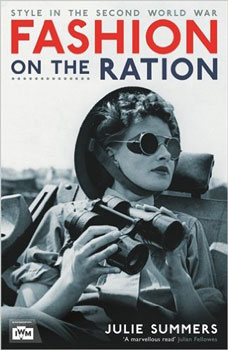 Julie Summers also wrote the book Fashion on the Ration: In September 1939, just three weeks after the outbreak of war, Gladys Mason wrote briefly in her diary about events in Europe: ‘Hitler watched German siege of Warsaw. City in flames.’ And, she continued, ‘Had my wedding dress fitted. Lovely.’For Gladys Mason, and for thousands of women throughout the long years of the war, fashion was not simply a distraction, but a necessity – and one they weren’t going to give up easily. In the face of bombings, conscription, rationing and ludicrous bureaucracy, they maintained a sense of elegance and style with determination and often astonishing ingenuity. From the young woman who avoided the dreaded ‘forces bloomers’ by making knickers from military-issue silk maps, to Vogue’s indomitable editor Audrey Withers, who balanced lobbying government on behalf of her readers with driving lorries for the war effort, Julie Summers weaves together stories from ordinary lives and high society to provide a unique picture of life during the Second World War. As a nation went into uniform and women took on traditional male roles, clothing and beauty began to reflect changing social attitudes. For the first time, fashion was influenced not only by Hollywood and high society but by the demands of industrial production and the pressing need to ‘make-do-and-mend’. Beautifully illustrated and full of gorgeous detail, Fashion on the Ration lifts the veil on a fascinating era in British fashion.
Julie Summers also wrote the book Fashion on the Ration: In September 1939, just three weeks after the outbreak of war, Gladys Mason wrote briefly in her diary about events in Europe: ‘Hitler watched German siege of Warsaw. City in flames.’ And, she continued, ‘Had my wedding dress fitted. Lovely.’For Gladys Mason, and for thousands of women throughout the long years of the war, fashion was not simply a distraction, but a necessity – and one they weren’t going to give up easily. In the face of bombings, conscription, rationing and ludicrous bureaucracy, they maintained a sense of elegance and style with determination and often astonishing ingenuity. From the young woman who avoided the dreaded ‘forces bloomers’ by making knickers from military-issue silk maps, to Vogue’s indomitable editor Audrey Withers, who balanced lobbying government on behalf of her readers with driving lorries for the war effort, Julie Summers weaves together stories from ordinary lives and high society to provide a unique picture of life during the Second World War. As a nation went into uniform and women took on traditional male roles, clothing and beauty began to reflect changing social attitudes. For the first time, fashion was influenced not only by Hollywood and high society but by the demands of industrial production and the pressing need to ‘make-do-and-mend’. Beautifully illustrated and full of gorgeous detail, Fashion on the Ration lifts the veil on a fascinating era in British fashion.
Home Fires is available on DVD: The Masterpiece PBS mini-series follows a group of inspirational women in a rural Cheshire community with the shadow of World War II casting a dark cloud over their lives. The isolated village couldn’t feel further away from the impending bloodshed and battlefields and yet it is not immune from the effects of war. As the conflict takes hold, and separates the women from their husbands, fathers, sons and brothers, the characters find themselves under increasing and extraordinary pressures in a rapidly fragmenting world. By banding together as the Great Paxford Women’s Institute, they will help maintain the nation’s fabric in its darkest hour, and discover inner resources that will change their lives forever.
You can order Season 2 of Home Fires on DVD here.
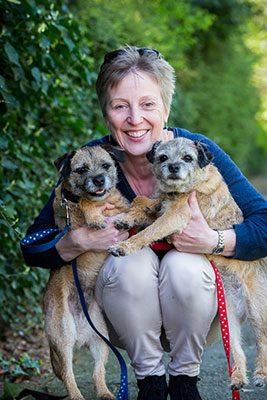
About Julie Summers: I was born near Liverpool and grew up first on the Wirral and then in Cheshire. Although the greater part of my childhood was spent outside pursuing any number of outdoor activities, I have always wanted to be a writer. For the first twenty years of life after university I worked in the art world but was drawn inexorably towards writing. Finally, in 2004, I gave up my job and began writing full time. It was the best decision I have made in my career. I am passionate about writing and unembarrassed to be so. I love researching my books, especially when they involve meeting people and talking to them about their lives.
People often ask me why I am so fascinated by the Second World War. My answer is that it is not war that interests me but the way people coped. In extreme situations such as war or mountaineering ordinary people find extraordinary strength and courage. That is what I enjoy learning about.
I have a little study in the attic of our house with one of the best views in Oxford – the dreaming spires seen from Iffley. I write in the mornings and find the problem is not sticking to the routine but tearing myself away from writing at the end of the day. My companions are two Border Terriers who keep me entertained and fit. They sleep in two old wine boxes under the window in my office.
I describe myself as a biographer and historian but the most important thing for me is to be a story teller.

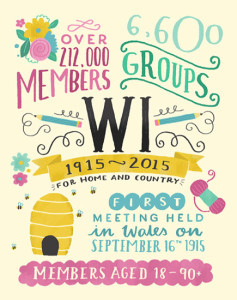
Today, the WI remains as a resource for women to gain educational opportunities, learn new skills, develop new friendships, and campaign on social justice issues. To learn more about the WI, visit their website.
If you enjoyed this post you’ll want to wander over to the Period Films List – the best costume period dramas, romantic period movies, all sorted by era (like Victorian, Edwardian…) and theme (like family-friendly).

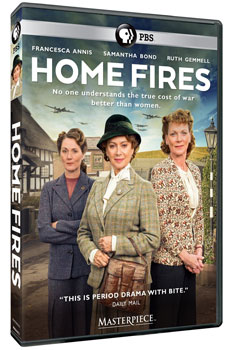


Jim Whelan
March 30, 2017 at 3:12 am (8 years ago)Love the ‘Homies’,
Kim
March 30, 2017 at 10:19 am (8 years ago)This was a wonderful article. I was disappointed to hear of Home Fires cancellation, but so happy to hear about the upcoming Home Fires novels! Wonderful website!
Willow and Thatch
March 30, 2017 at 11:06 am (8 years ago)Thank you and welcome!